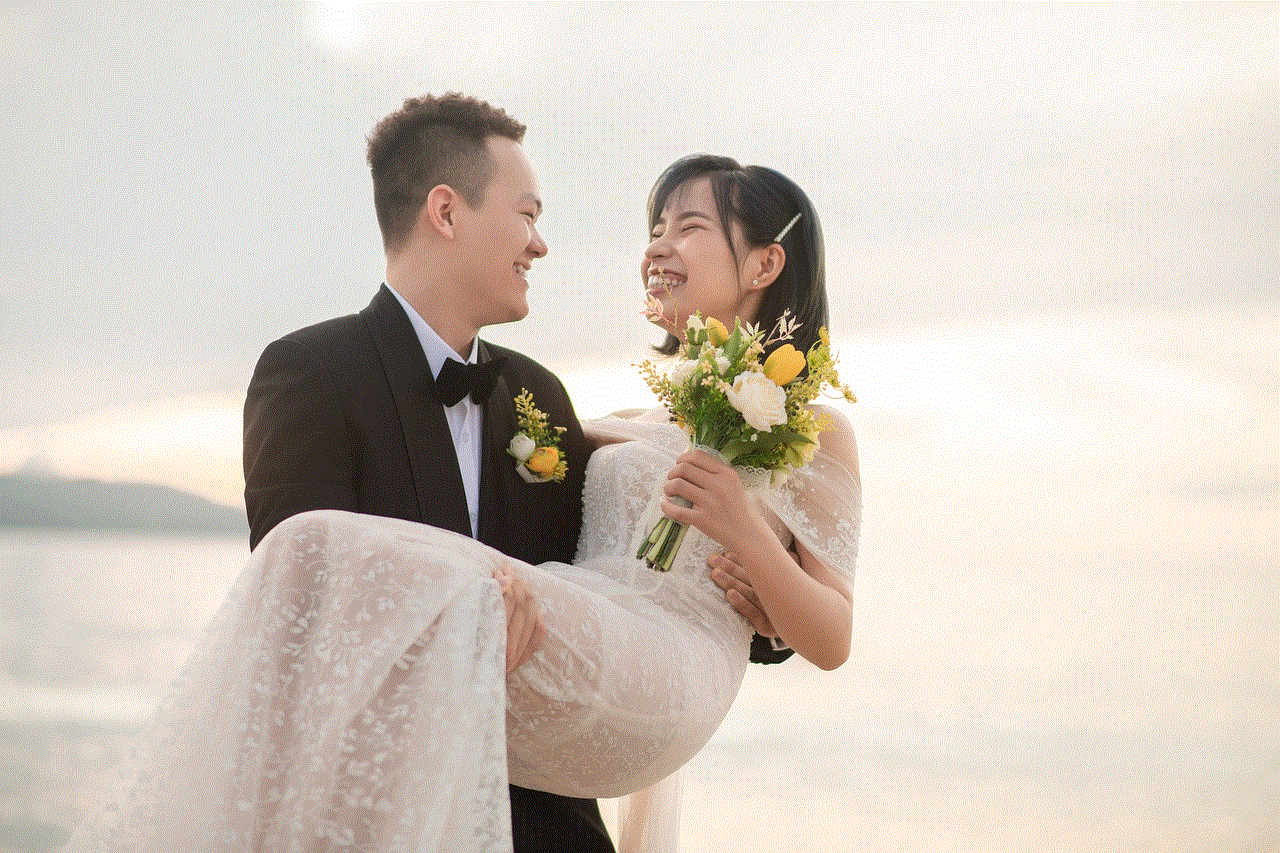are send its on snap anonymous
Snapchat has revolutionized the way we communicate with each other, providing a platform for instant messaging, photo and video sharing, and even video calling. However, one of its most controversial features is the ability to send snaps anonymously. This has raised concerns about privacy, cyberbullying, and the impact on our society as a whole. In this article, we will explore the concept of anonymous snaps on Snapchat and the implications it has on its users.
To understand the significance of anonymous snaps, we must first look at the history of Snapchat. The app was launched in 2011, and its main selling point was the ephemeral nature of its messages. Unlike other social media platforms, where posts and messages are permanent, snaps on Snapchat disappear after a set amount of time, usually 10 seconds. This feature made it popular among teenagers and young adults, who saw it as a way to share moments without the fear of them being permanently recorded on the internet.
However, with the rise of anonymous messaging apps such as Yik Yak and Whisper, Snapchat decided to introduce its own version of anonymity in 2013 with the release of Snapchat Stories. This feature allows users to post snaps that can be viewed by all their friends for 24 hours before disappearing. The catch? The posts are not attributed to any individual, and the poster can choose to remain anonymous. This sparked a debate about the impact of anonymous snaps on the app’s users and its potential for misuse.
One of the main concerns raised about anonymous snaps is the issue of cyberbullying. The anonymity provided by Snapchat Stories can be used as a shield by bullies, who can send hurtful messages or post embarrassing photos without the fear of being identified. This has led to numerous cases of cyberbullying, with victims feeling helpless and unable to seek justice for the abuse they have received. In some extreme cases, cyberbullying has even led to self-harm and suicide.
Furthermore, the anonymity of snaps also poses a threat to the privacy of its users. With no accountability, anyone can send or post anything without fear of being traced back to them. This has raised concerns about the safety of young users, who may be more vulnerable to online predators. It also raises questions about the responsibility of the app and its creators in protecting its users from potential harm.
Another issue with anonymous snaps is the potential for misinformation and fake news to spread. With the rise of fake news on social media platforms, the anonymity of snaps can make it easier for false information to be shared without being traced back to its source. This can have serious consequences, especially in times of crisis or during elections when accurate information is crucial.
On the other hand, supporters of anonymous snaps argue that it provides a safe space for individuals to express themselves without fear of judgment or repercussions. They argue that without the fear of being identified, people can share their thoughts and feelings more openly. This can be particularly beneficial for those who are struggling with mental health issues and may find it difficult to talk about their problems openly.
Another argument in favor of anonymous snaps is that it allows people to share sensitive information without revealing their identity. This can be useful in situations where a person wants to report something but fears retaliation or backlash. For example, a victim of a crime can report it anonymously, without the fear of being identified by the perpetrator.
Moreover, the anonymous nature of snaps has also been seen as a way to promote creativity and self-expression. With no pressure to maintain a certain image or persona, users can post more authentic and genuine content. This has led to the rise of popular anonymous Snapchat accounts, where individuals can share their thoughts, opinions, and experiences without revealing their identity.
Snapchat has also taken steps to address the concerns surrounding anonymous snaps. In 2014, the app introduced a feature called “Our Story,” where users can contribute snaps to a public story that is curated by the app. This allows for more accountability, as well as providing a platform for positive and meaningful content to be shared.
In addition, Snapchat has also implemented measures to combat cyberbullying and protect its users. This includes the ability to block and report users, as well as a “Do Not Disturb” feature that allows users to control who can contact them. The app has also partnered with organizations such as The Trevor Project and the National Network to End Domestic Violence to provide resources and support for those who may be experiencing abuse on the app.
In conclusion, the ability to send anonymous snaps on Snapchat has sparked a debate about its impact on its users and society as a whole. While it provides a space for self-expression and can be a useful tool in certain situations, it also has the potential for misuse and harm. As with any social media platform, it is important for users to be aware of the potential risks and for the app to take responsibility for protecting its users. Only then can we truly harness the positive aspects of anonymous snaps on Snapchat.
is anime considered a cartoon
Is Anime Considered a Cartoon?
Introduction:
Anime has gained immense popularity over the years and has become a significant part of modern entertainment. However, it has often been a subject of debate whether anime should be considered a form of cartoon or not. Many argue that anime is distinct from cartoons, while others believe that they are essentially the same. In this article, we will explore the characteristics of anime and cartoons, their similarities, and differences, and try to determine whether anime can be considered a cartoon or not.
Definition of Anime and Cartoons:
Before delving into the debate, it is important to define both anime and cartoons. Anime is a style of animation that originated in Japan and is characterized by its unique art style, vibrant colors, exaggerated features, and fantastical themes. It covers a wide range of genres, including action, romance, science fiction, fantasy, and more. On the other hand, cartoons are a form of animation that can be traced back to early forms of art. Cartoons encompass various styles and are not restricted to any particular country or culture.
Similarities Between Anime and Cartoons:
While anime and cartoons have their own distinct characteristics, they also share several similarities. Both are forms of animation that bring static images to life through movement. They both utilize techniques like drawing, painting, digital animation, and storytelling to create visual narratives. Furthermore, both anime and cartoons have the ability to entertain and engage audiences of all ages. They often employ humor, satire, and social commentary to convey their messages. Additionally, anime and cartoons can be enjoyed in various formats such as television shows, movies, web series, and more.
Differences Between Anime and Cartoons:
Although anime and cartoons share similarities, they also have notable differences that set them apart. One of the most prominent differences is the art style. Anime is known for its distinctive character designs, with large eyes, colorful hair, and exaggerated features. In contrast, cartoons can have a wide range of art styles, from simple and minimalist to detailed and realistic. Additionally, anime often incorporates elements of Japanese culture, language, and traditions, while cartoons are more influenced by the culture they originate from.



Another significant difference lies in the target audience. While cartoons are often associated with children’s entertainment, anime caters to a broader range of viewers, including children, teenagers, and adults. Anime explores complex themes and mature content that may not be suitable for younger audiences. Furthermore, anime tends to have more intricate and layered storylines, with character development and plot arcs that span multiple episodes or seasons. Cartoons, on the other hand, usually have self-contained episodes with simpler narratives.
Cultural Impact and Global Reach:
Both anime and cartoons have made a significant impact on popular culture worldwide. Cartoons, especially those from the United States, have been influential in shaping the animation industry and have garnered massive international success. Icons like Mickey Mouse, Bugs Bunny, and Tom and Jerry are recognized globally and have become cultural phenomena. Similarly, anime has gained a massive following outside of Japan. Anime series like “Dragon Ball,” “Naruto,” and “One Piece” have captivated audiences around the world and have become a significant part of global pop culture.
However, it is worth noting that the impact of anime is not limited to its entertainment value. Anime has also played a crucial role in promoting Japanese culture internationally. It has introduced viewers to aspects of Japanese traditions, customs, and language, thereby fostering an interest in Japan’s rich heritage. This cultural exchange has led to the growth of anime fandoms and conventions worldwide, where enthusiasts gather to celebrate their shared love for anime.
The Anime Industry:
In recent years, the anime industry has experienced tremendous growth and has become a billion-dollar industry. Anime series and movies are produced at a rapid pace, and the market is flooded with a wide variety of content. The industry has also expanded beyond traditional television and film formats. Streaming platforms like Netflix , Crunchyroll , and Funimation have made anime easily accessible to global audiences, further fueling its popularity.
Moreover, anime has become a lucrative venture for merchandise, including action figures, collectibles, clothing, and more. The success of anime-inspired merchandise demonstrates the immense influence and financial power of the anime industry. This growth has led to collaborations between anime and mainstream brands, further blurring the lines between anime and cartoons in terms of commercial viability and recognition.
Conclusion:
In conclusion, the debate of whether anime is considered a cartoon is subjective and largely depends on individual perspectives. While anime and cartoons share similarities as forms of animation, they also have distinct characteristics that set them apart. Anime’s unique art style, complex storytelling, and cultural impact make it a distinct genre that has captivated audiences worldwide. Nonetheless, both anime and cartoons have undeniably shaped the animation industry, entertained millions of people, and left a lasting impact on popular culture. Whether one considers anime a form of cartoon or not, it is undeniable that both have their own merits and continue to bring joy and entertainment to people of all ages.
sexting good night messages
Title: The Art of Sexting: The Power of Good Night Messages
Introduction (approx. 150 words)
In the era of digital communication, sexting has become a prevalent form of expressing intimacy and desire. Good night messages, in particular, hold a special place in the realm of sexting. This article will delve into the significance of sending good night messages in relationships, exploring how they can deepen emotional connections and ignite passion. We will discuss the dos and don’ts of sexting, the benefits of incorporating good night messages, and provide practical tips for crafting enticing and meaningful messages.



1. The Importance of Sexting (approx. 200 words)
Sexting has emerged as an essential aspect of modern relationships. It allows couples to maintain a sense of closeness, regardless of physical distance. Sexting can help reignite passion, explore fantasies, and build anticipation for future encounters. It also serves as a means of keeping the flame alive in long-term relationships. Good night messages, in particular, can be a powerful way to create a lasting impact before drifting off to sleep.
2. The Allure of Good Night Messages (approx. 250 words)
Sending good night messages adds a touch of romance and thoughtfulness to the sexting experience. It demonstrates care and affection, allowing couples to connect emotionally even when they are physically apart. Good night messages serve as a reminder of desire and love, creating a sense of anticipation for the next encounter. They can be a way to explore boundaries, express vulnerability, and engage in playful banter, fostering a deeper level of intimacy.
3. Building Trust and Connection (approx. 250 words)
When sexting, trust is of utmost importance. Good night messages can be used to build trust and strengthen emotional connections. By expressing desires, fears, and dreams, couples can develop a deeper understanding of each other’s needs and desires. Trust is nurtured through open and honest communication, allowing partners to feel secure in sharing their innermost thoughts.
4. Effective Sexting Etiquette (approx. 200 words)
Before engaging in sexting, it is crucial to establish boundaries and consent. Respect your partner’s comfort level and never pressure or coerce them into sexting. Consent should be enthusiastic and ongoing throughout the conversation. Remember that once a message is sent, it cannot be taken back, so ensure that both parties are comfortable with the content being shared.
5. Crafting Captivating Good Night Messages (approx. 250 words)
Creating an enticing good night message involves a balance between seductive and genuine expressions of affection. Use descriptive language to paint a vivid picture and evoke emotions. Incorporate personal touches, such as inside jokes or memories, to make the message more meaningful. Consider your partner’s preferences and tailor the message to their desires, making it personalized and intimate.
6. Maintaining Boundaries and Privacy (approx. 200 words)
While sexting can be exciting, it is essential to maintain boundaries and respect privacy. Discuss with your partner what is off-limits and establish clear rules. Avoid sharing explicit photos or messages that may compromise your privacy or security. Remember that consent is ongoing, and both parties have the right to revoke it at any time.
7. The Psychological Benefits of Sexting (approx. 250 words)
Sexting can have various psychological benefits. It can boost confidence, enhance self-esteem, and create a sense of sexual empowerment. Engaging in consensual sexting can increase intimacy, reduce stress, and improve overall relationship satisfaction. Good night messages, in particular, can create a sense of emotional security, promoting feelings of love and connection.
8. Sexting as a Tool for Long-Distance Relationships (approx. 250 words)
Good night messages are especially valuable for couples in long-distance relationships. They serve as a reminder of love and commitment, bridging the physical gap between partners. Sexting can foster a sense of intimacy and keep the flame alive, even when miles apart. Good night messages allow couples to maintain emotional closeness and create anticipation for future reunions.



Conclusion (approx. 150 words)
Sexting, including the art of sending good night messages, has become an integral part of modern relationships. It has the power to deepen emotional connections, ignite passion, and maintain intimacy, regardless of physical distance. By understanding the significance of sexting, respecting boundaries, and crafting captivating messages, couples can explore and enhance their relationships in exciting ways. Remember, sexting should always be consensual, respectful, and centered around building trust and emotional connections.

